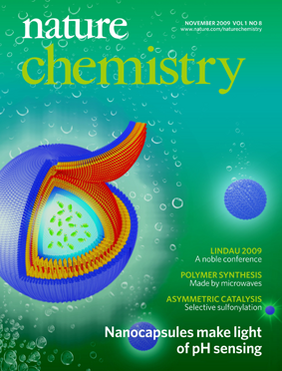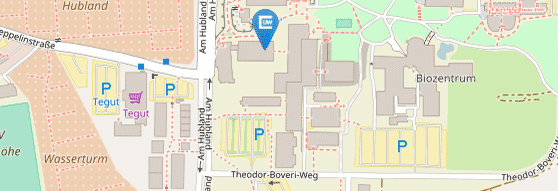Fluorescent Nanocapsules
10/30/2009The cover of the November issue of "Nature Chemistry" shows water-soluble perylene bisimide vesicles that have been developed in the Institute of Organic Chemistry.
An amphiphile based on a perylene bisimide (a fluorescence acceptor) self-assembles in water to form vesicular nanocapsules that can trap a bispyrene compound (a fluorescence donor) inside their hollow cores, as shown to the right. The donor molecules adopt one of two different conformations, depending on the pH of the solution, and each emits a different color of light (either green or blue) when exposed to UV irradiation. In each conformation, the donors transfer some energy to the shell of the vesicle, which ultimately emits red light. The combination of emissions at pH 9 results in white fluorescence.
The unique amphiphilic perylene bisimides as well as the process of trapping the bispyrenes have been developed in the laboratories of Prof. Frank Würthner, with Alexander von Humboldt fellow Dr. Xin Zhang as the one to succeed in the crucial step of trapping the bispyrene-based energy donors.
The researchers from Würzburg now hope to develop functional nanocapsules for application in artificial photosynthesis and diagnostics.
Correspondence to:
Prof. Dr. Frank Würthner, phone: ++49 931 31 85340, E-mail: wuerthner@chemie.uni-wuerzburg.de
Original paper:
X. Zhang, S. Rehm, M. Safont-Sempere, F. Würthner, Nature Chemistry 2009, 1, 623 - 629; doi:10.1038/nchem.368



